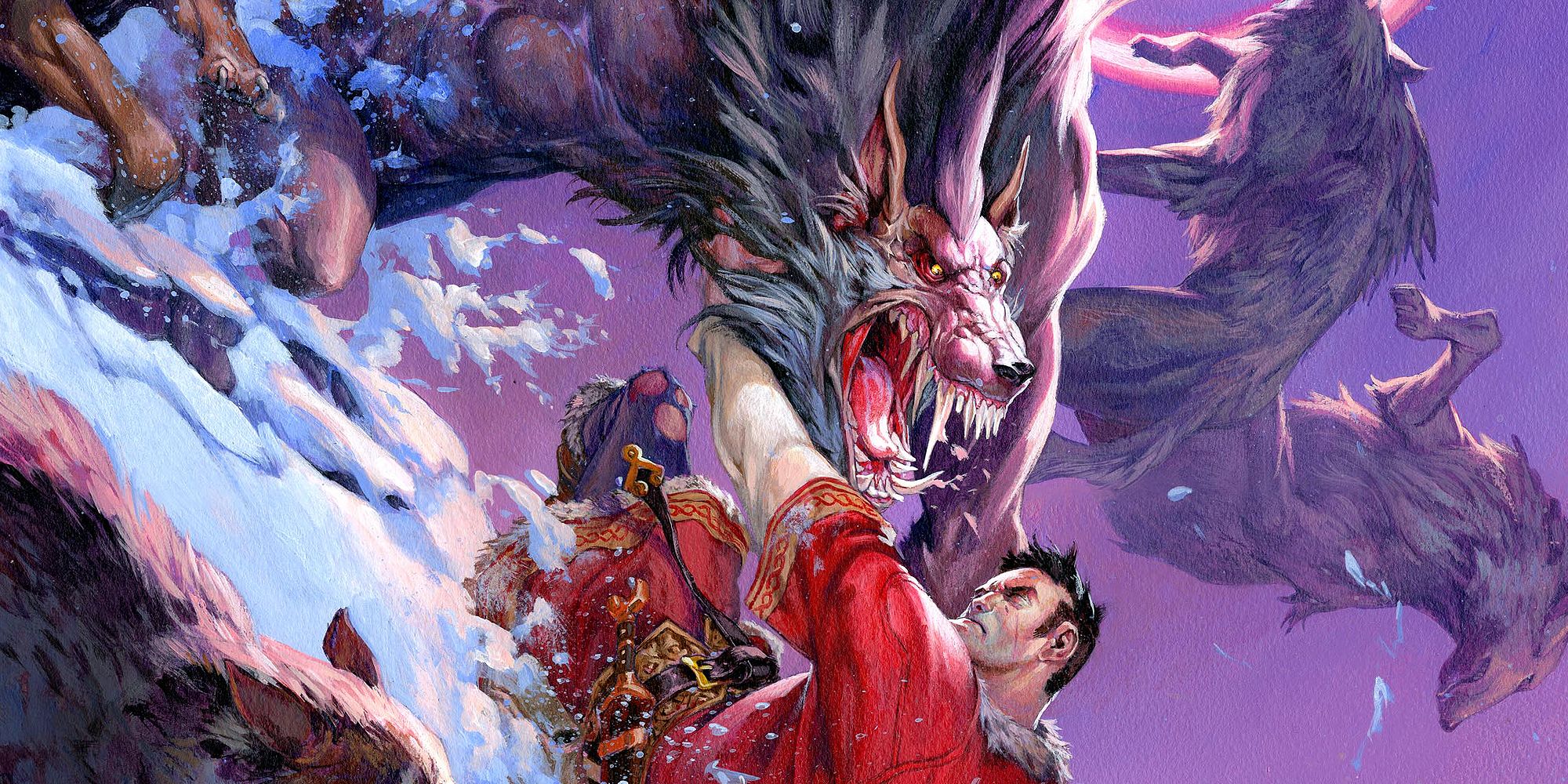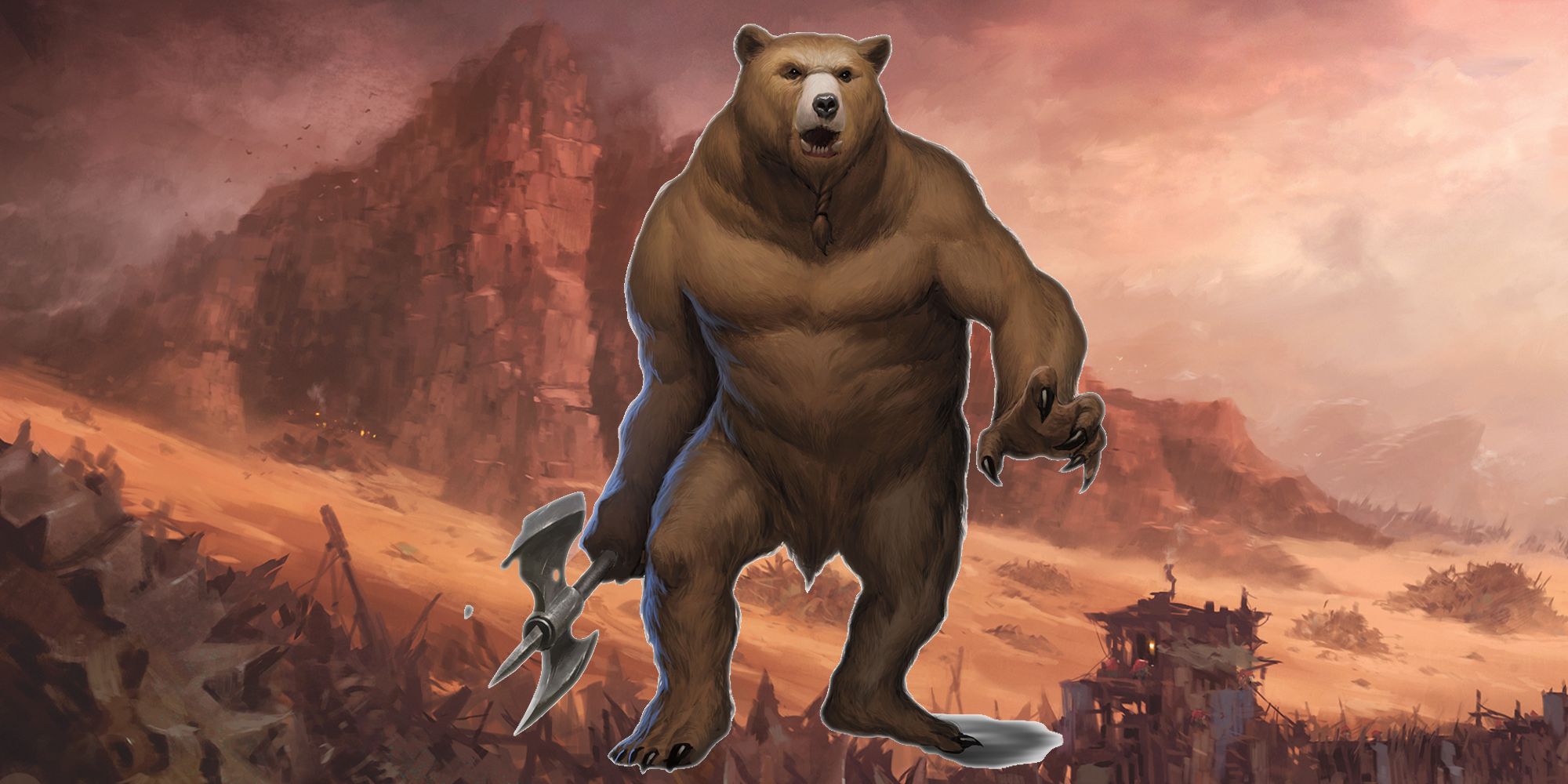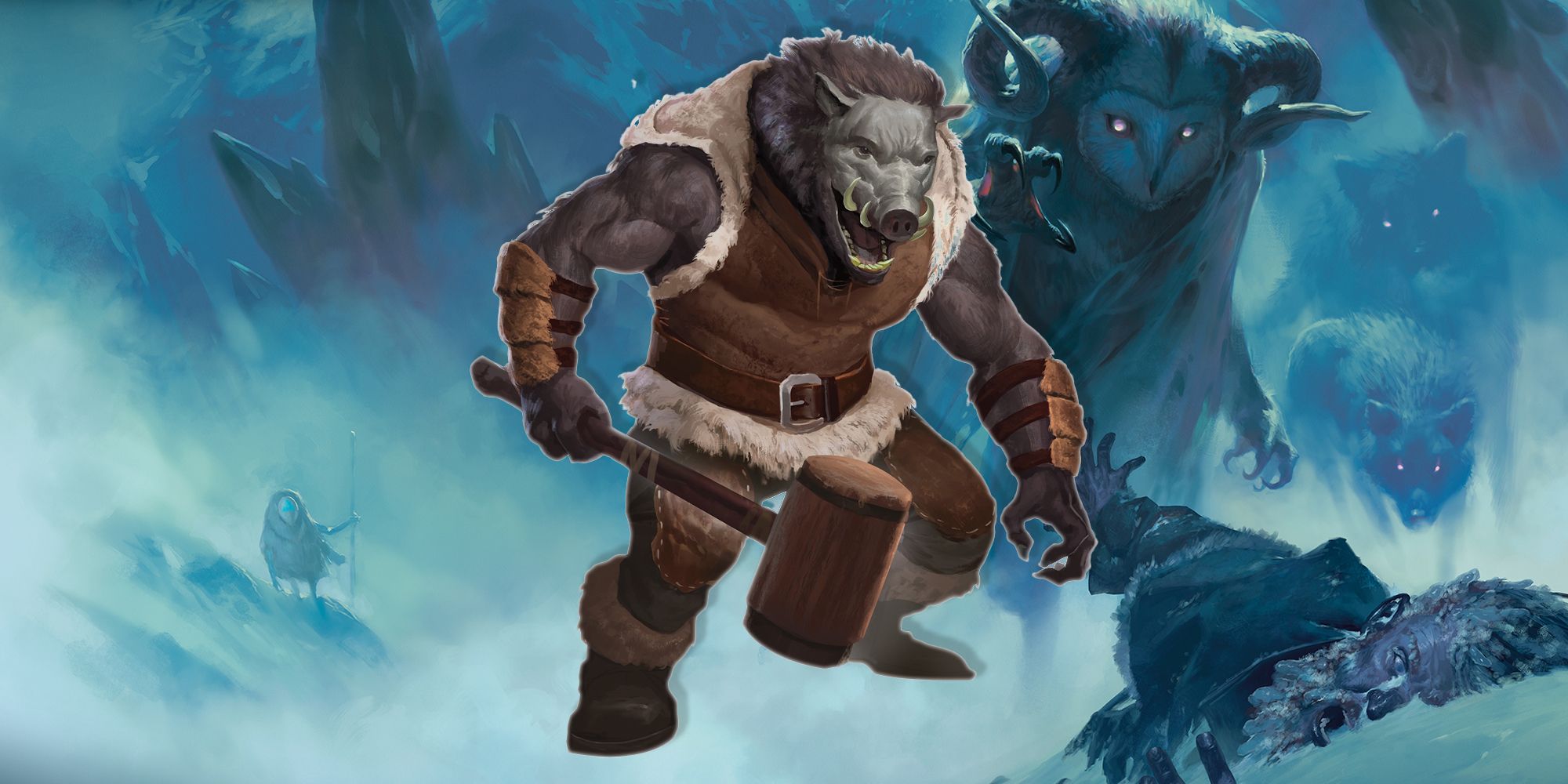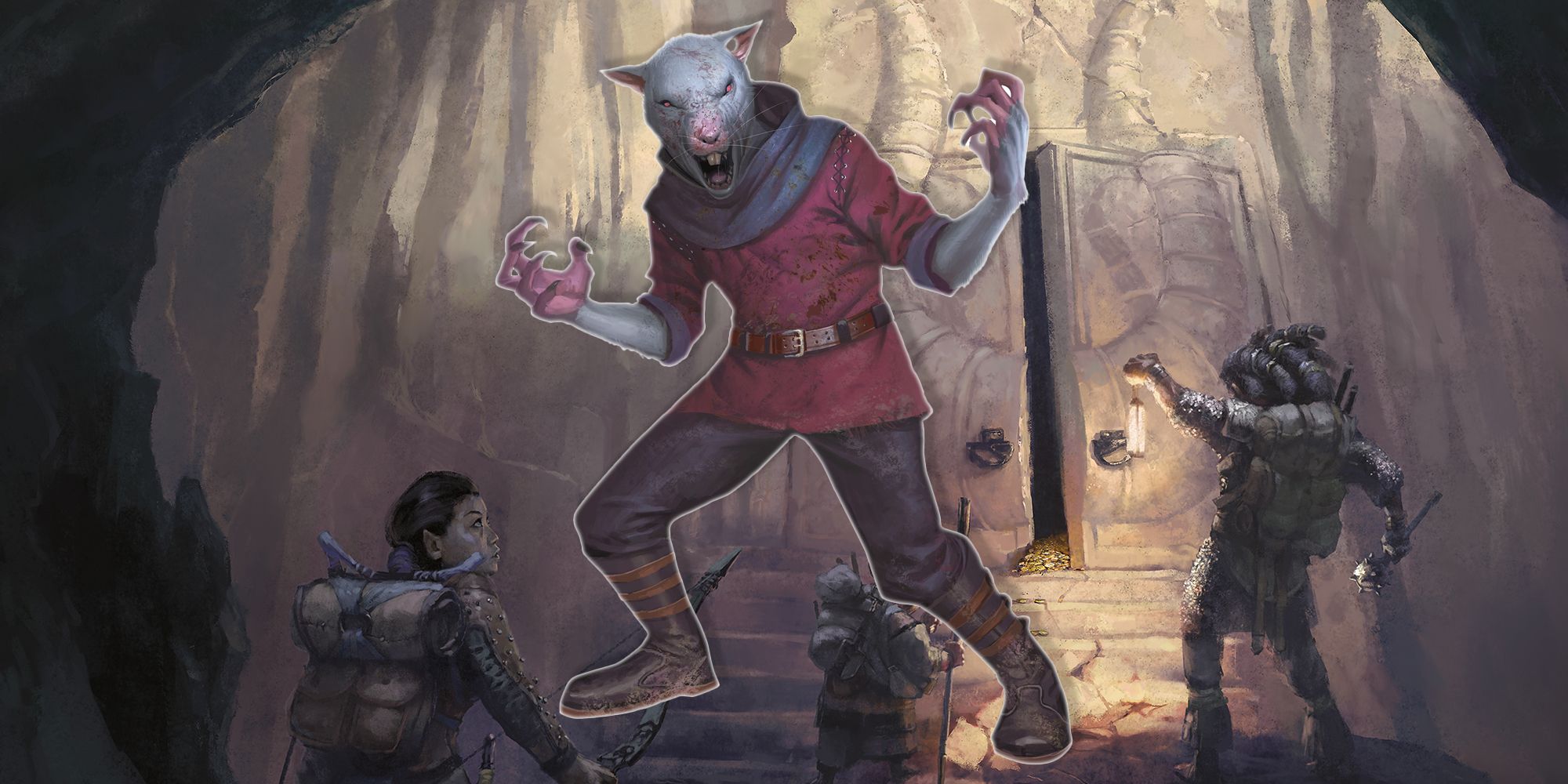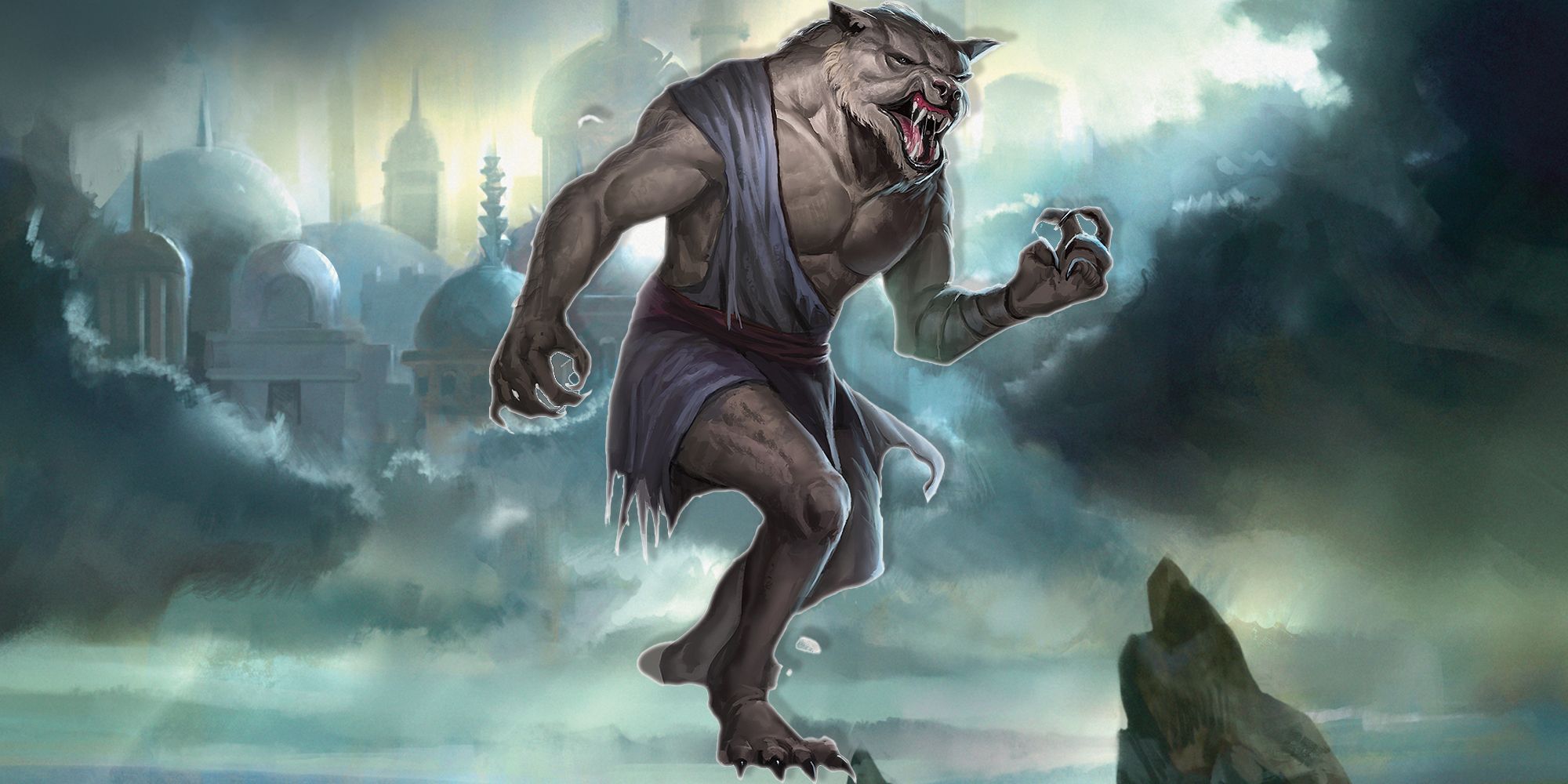Lycanthropes are even more awesome than usual in Dungeons & Dragons. This is not just because of their abilities, or how the curse works in general, but also because of the ridiculous amount of roleplaying and backstory options Lycanthropy introduces. Whether rolling as the Dungeon Master or a player character, these cursed creatures offer a massive amount of potential to any campaign.
The following will cover how to play a Lycanthrope for DMs and PCs alike, summarize their respective nature and traits, and illustrate some of their differences. Whichever side of the screen a D&D player finds themselves on, hopefully this compendium will prove useful.
The Curse of Lycanthropy can be something one is born with (via at least one parent being a Lycanthrope), or a creature can become a Lycanthrope after being attacked by one. The main difference between the two is their respective routes on the curse's removal. If a character is cursed after being wounded, the Curse of Lycanthropy can be destroyed with a simple "Remove Curse" spell. However, if a person is born with the curse, the only way to remove it is via the (nearly all-powerful) "Wish" spell. Arguably the strongest spell in D&D, those familiar with "Wish" know that casting it is not simple in the slightest.
What Playing As A Lycanthrope In D&D Means
Regardless of the curse's source, Lycanthropy in Dungeons & Dragons offers two paths: to embrace the curse, or to fight it. Those choosing to embrace the curse often turn evil, their bestial natures getting the better of them. Mastery over the curse's effects can be attained through experience, however. Those that choose to fight it keep their alignment and act as they normally would while in humanoid form. If embracing Lycanthropy, the character gains the alignment of their respective Lycanthrope (in which case, a DM can chose to take control of their actions).
Both paths turn into a hybrid or beast form during full moons, but a character who chose to fight the curse may not be aware of it. However, if unaware and fighting, "memories often haunt a Lycanthrope as bloody dreams" (to quote the Monster Manual). Essentially, this means they will have dreams of their deeds during a transformation. After being cursed for longer periods of time, a character's humanoid form may also gain physical attributes that mirror its bestial one.
A Lycanthrope player character keeps their normal stats with the exception of those specified by their Lycanthrope type. The character also benefits from their Lycantrope's speed in non-humanoid form, along with their immunities, their traits, and non-equipment actions. They also have proficiency in bite and claw attacks, which deal damage based on their respective beast's stat block. When in beast form, characters cannot speak.
Dungeons & Dragons: How To Play A Werebear
Not all Lycanthropes have to be evil and, if a character would prefer that, or is just really into the idea of roleplaying Beorn from The Lord Of The Rings, a Werebear is the best route to take. Werebears often do not give into their bestial natures, and prefer to remain secluded. While in their humanoid forms, characters tend to resemble their animal forms by having extra hair (which is usually the same color as whatever their fur is as a bear).
Of the neutral good alignment, Werebears tend to avoid spreading their curse with the rare exception of (to quote the MM again) "chosen companions or apprentices." Don't be fooled by their standard good alignment, though, Werebears can still be evil and dangerous Dungeons & Dragons monsters. Either way, they tend to be territorial. A Werebear character gains a strength of nineteen, a +1 to AC as both a bear and a hybrid, and their natural attacks and damage rolls are based on their strength.
For DMs, the Werebear monster AC is ten in humanoid form, and eleven in hybrid or beast. They average 135 HP, have a speed of thirty (or forty when in hybrid or beast), and a climb of thirty. Their passive perception is 17, they roll perception with a +7, and are a challenge rating of 5. Their base stats are: STR 19 (+4), DEX 10 (+0), CON 17 (+3), INT 11 (+0), WIS 12 (+1), and CHA 12 (+1).
For PCs and DMs, the Werebear gets both "Keen Smell", and "Shapechanger" (all Lycanthropes have "Shapechanger"). "Keen Smell" allows for advantage on checks that are based on smell. "Shapechanger" gives Lycanthropes the ability to use an action to polymorph into a hybrid, full-beast, or humanoid form. Other than size and AC, it's stats are the same, and any worn equipment doesn't transform. If a Lycanthrope dies, it turns back into its humanoid form.
The Werebear's multi-attack is two claw attacks in bear form, two greataxe attacks in human form (does not apply to PCs, they use the equipment they have), or either in hybrid form. If a target is humanoid, they must pass a (DC 14 CON) save, or gain the Curse of Lycanthropy. In bear or hybrid form Werebears can bite attack (+7 to hit, reach five feet), which averages 15 (2d10 + 4) piercing damage. All Lycanthropes are immune to bludgeoning, piercing, and slashing damage with non-magical and non-silver weapons. Claw attacks have the same range and modifier to hit as the bite, and average thirteen (2d8+4) slashing. Greataxe is the same as well, averaging ten (1d12+4) slashing. (Note: Stats will likely differ for PCs, so obviously players should use their character sheet when attacking.)
Dungeons & Dragons: How To Play A Wereboar
Coming in at neutral evil, Wereboars will purposefully infect victims with Lycanthropy in Dungeons & Dragons. Wereboars will often stay with small groups and ally themselves with orcs. PCs get a strength of 17 (if theirs was lower), a +1 to AC in boar or hybrid, and attack and damage is strength based. Their humanoid form is usually (MM) "stocky and muscular, with short, stiff hair." Their DC for "Charge" is equal to 8 + their proficiency bonus + their strength modifier.
For DMs, the stats for Wereboars are: STR 17 (+3), DEX 10 (+0), CON 15 (+2), INT 10 (+0), WIS 11 (+0), and CHA 8 (-1). Their AC is the same as Werebears, their HP is 78, and their speed is thirty (or forty in boar form). It's passive perception is 12, and it's a CR of four.
For PCs and DMs, Wereboars have "Shapechanger", "Charge", and "Relentless". Charge is a tusk attack (in boar or hybrid form) but with an extra 2d6 slashing damage if given fifteen feet of straight momentum. The target then has to make a save (DC 13 STR), or be knocked prone. "Relentless" is just sturdy from Pokèmon, and lets a Wereboar return to one HP if it dies from fourteen damage or less (once every rest). The Wereboar's multi-attack (humanoid or hybrid form) makes two attacks, but only one can be with tusks. The Wereboar can also use "Maul" which is a +5 to hit, has a reach of five feet, and averages ten damage. Tusk attacks can only be used in hybrid or boar form, have the same stats as "Maul" (except tusk is slashing), but requires a DC 12 CON save for the Lycanthropy curse.
Dungeons & Dragons: How To Play A Wererat
Feel like playing Splinter from Teenage Mutant Ninja Turtles? Good news! The Wererat is an actual thing in Dungeons & Dragons! Usually twitchy, they favor stealth, and like to ambush targets. Wererats often operate in clans, and only intentionally curse new members as an initiation rite. Those with the curse on the outside, though, are usually hunted if found out. Also, (just like TMNT) they can be found in sewers, cellars, and pretty much anywhere underground. PCs get a dexterity of 15 (if theirs is worse), and attack and damage favors either strength or dexterity (pick the higher one).
For DMs, their AC is a big twelve, they have an HP of 33, and a speed of thirty. They are a CR of two, have darkvision up to sixty feet in rat form, and their stats are: STR 10 (+0), DEX 15 (+2), CON 12 (+1), INT 11 (+0), WIS 10 (+0), and CHA 8 (-1). They can use a shortsword or crossbow in human and hybrid forms. The shortsword is a +4 to hit, has a five-foot range, and averages five piercing. The crossbow is the same to hit, range is 30-120, and averages the same damage.
For PCs and DMs, they have "Shapechanger", and "Keen Smell". Wererat multi-attacks are two attacks, but only one can be a bite. Their bites (in hybrid or rat) have a +4 to hit, five-foot reach, and average four piercing damage. Humanoids need to pass a (DC 11) constitution save or gain the Lycanthropy curse.
Dungeons & Dragons: How To Play A Weretiger
The only Lycanthrope of the neutral alignment, Weretigers frequent jungles, and can be found alone or in small groups. They view other Weretigers as competition, and as such do not pass on their Lycanthropy lightly. PCs gain a strength of seventeen, strength based attack and damage, and a DC 8 + their proficiency bonus + their strength modifier for "Pounce".
For DMs, their stats are: STR 17 (+3), DEX 15 (+2), CON 16 (+3), INT 10 (+0), WIS 13 (+1), and CHA 11 (+0). Weretigers have an AC of twelve, 120 HP, and a thirty-foot speed (forty in tiger form). They hit with a scimitar and a longbow in humanoid and hybrid forms. The scimitar has a +5 to hit, five-foot range, and averages six slashing. The longbow is +4 to hit, 150-600 range, and averages the same as the scimitar but it's piercing damage. They are a CR of four.
For Dungeons & Dragons PCs and DMs, the Weretiger's multi-attack depends on which form it's in. It can either make two weapon attacks as humanoid or hybrid, or use two claw attacks as a hybrid. A Weretiger's bite has a +5, reach of five, and averages eight damage. A humanoid target must pass a (DC 13 CON) save, or be cursed with Weretiger Lycanthropy. Their claw attacks are the same as their bite, but do seven slashing damage. They have "Keen Hearing and Smell", giving them advantage on perception checks for both. They also have "Shapechanger" and "Pounce". "Pounce" works like the Wereboar's "Charge", but requires a (DC 14) strength saving throw. If the Weretiger knocks a creature prone, it can bite as a bonus action.
Dungeons & Dragons: How To Play As A Werewolf
Even in humanoid form, those with the Werewolf curse are the most savage. Werewolves can be found anywhere where society isn't, and sometimes travel in packs with wolves and dire wolves. PCs get a strength of 15 (if theirs is worse), a +1 to AC in wolf or hybrid, and attacks are strength based.
For DMs, Werewolves have an AC of eleven, 58 HP, a CR of three, thirty speed (forty in wolf form), and can use a spear. The spear has a +4 to hit, five-foot reach, 20-60 foot range, and averages five damage if one handed and six if two handed. Their stats are: STR 15 (+2), DEX 13 (+1), CON 14 (+2), INT 10 (+0), WIS 11 (+0), and CHA 10 (+0).
For PCs and DMs, Werewolves have "Keen Hearing and Smell", and "Shapechanger". Their bite can be used in wolf or hybrid form in Dungeons & Dragons, has a +4 to hit, reach of five, and averages six piercing. Their save for the Lycanthropy curse is a DC 12 CON. Claw attacks are the same (besides the curse stuff), but averages seven damage. Werewolves multi-attack is two with its spear (humanoid), or one with bite and one with claws (hybrid form).
Whichever Lycanthrope a player or Dungeon Master chooses in Dungeons & Dragons, they all have unique and interesting characteristics that add to the game.

